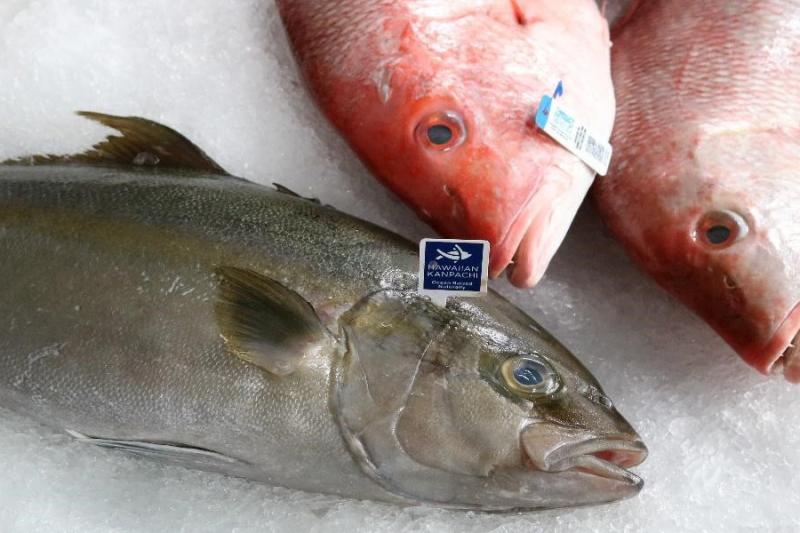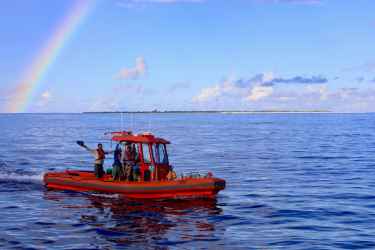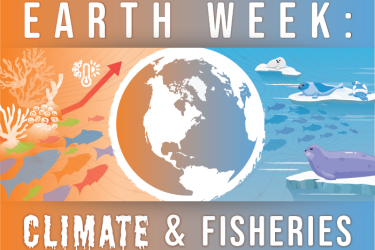There is a growing interest in understanding where our food is coming from and in supporting local farmers. There has also been an increased focus on local fare on many menus at eateries coast to coast. In fact, the once-obscure term “locavore” is now in the dictionary and is a highlighted feature on menus. When thinking about farm-to-fork many envision rolling hills, red barns, and a farmer in overalls tending his or her flock. But what about a farmer in waders or swim trunks? Can we trade the rolling hills for blue waves and the barn for a boat? That is just what the tide-to-table farmers are hoping to do.
Aquaculture, also known as farming in water, is the fastest growing food production system in the world. In the United States, aquaculture farmers raised and harvested more than 80 million pounds of seafood in coastal waters and the open ocean. These farms can vary from seaweed production in Alaska, oyster gardens in New England, and even offshore farms in the clear waters of Hawaii.
A Growing Seafood Demand
Seafood is vital to the Hawaiian economy and culture. Fish, shellfish, and seaweeds are an important part of local diets. Seafood demand is further increased by millions of visitors who crave high-quality, fresh, and local seafood.

Blue Ocean Mariculture, the nation’s only offshore fish farm, is located just off the rocky Kona coast. It is helping provide a native Kanpachi species to meet this growing demand for seafood. “Among local species, Hawaiian Kanpachi was a clear choice for its high quality, versatility, and natural ability to hit sustainability benchmarks,” said Blue Ocean Mariculture farmer Tyler Korte.
The fish, marked by dark blue-green upper body and a lavender-tinted belly, are grown in floating pens that can be raised and lowered in the water column. The series of pens on the farm can grow around 900,000 pounds of fish a year.
Selecting a Site for Sustainability
As with terrestrial farms, site selection is an important aspect of farm placement and ocean farmers review characteristics like temperature and water quality. However, they must also consider depth, current speed, and oxygen when it comes to placing a farm.
“Hawaii's highly oxygenated waters are the perfect temperature for growing Kanpachi year round,” added Korte. “In open-ocean farming, site depth and water turn over are key factors in modeling how many fish we can grow sustainably in an area.” To ensure the site meets the farm’s sustainability mission, monthly tests monitor the farm pens and even the habitat around the farm.
“After working with varied fishing industry companies and interests I realized the potential for open ocean farming to reduce pressure on capture fisheries while also sustainably expanding access to seafood,” said Blue Ocean Mariculture president Todd Madsen. “We understand that mariculture has to be done smartly—with respect for local culture, ocean water quality, benthic health and wildlife, and that is our goal.”
This combined commitment to environmental stewardship and fish quality is recognized by seafood experts and foodies around Hawaii and on the mainland. Farm-raised Hawaiian Kanpachi can be found on Hawaiian menus like Waikiki’s Beachhouse at the Moana and the Four Seasons Resort Hualalai. A new partnership is further expanding awareness of farm-raised fish.
In 2018, the James Beard Foundation selected Blue Ocean Mariculture as a Sustainable Seafood Partner. They recognized Blue Ocean’s commitment to providing leading chefs and restaurant professionals with seafood raised in a sustainable manner. Partnerships with leading chef organizations and local restaurants are helping bridge the gap between farm and plate and are changing the way we think about seafood.
Challenging Misperceptions Through Quality Seafood
Blue Ocean Mariculture and other tide-to-table farmers continue to challenge the misperception of aquaculture and work to win the hearts and minds of the public. It’s usually the stomach and eyes that first convert. Recipes like macadamia nut-crusted Kanpachi and ginger juice ogo Kanpachi Poke are often the gateway to a conversation about sustainable farming.
Hawaiian kanpachi poke. Credit: Blue Ocean Mariculture.
Expert analyses show that ocean aquaculture can be a resource-efficient, environmentally responsible form of food production. It can play a significant role in increasing seafood supply, improving human nutrition, and creating jobs. However, many people still have limited understanding of aquaculture and may encounter information that can be out of date, inaccurate, or incomplete.
“Public perception of aquaculture can be a barrier and aquaculture farmers are working hard to deliver sustainable seafood while also educating our communities about the important role we play in food security and ocean stewardship,” added Madsen. “We are proud to be part of the local community and are committed to sustainable farm practices.”
With a global population expected to exceed 9 billion, the need for healthy lean proteins and food security is growing. The oceans cover more than70 percent of the Earth’s surface, but currently account for about two percent of human food. With limited arable land and freshwater, it is no surprise the world is turning to ocean farmers like those at Blue Ocean Mariculture.






